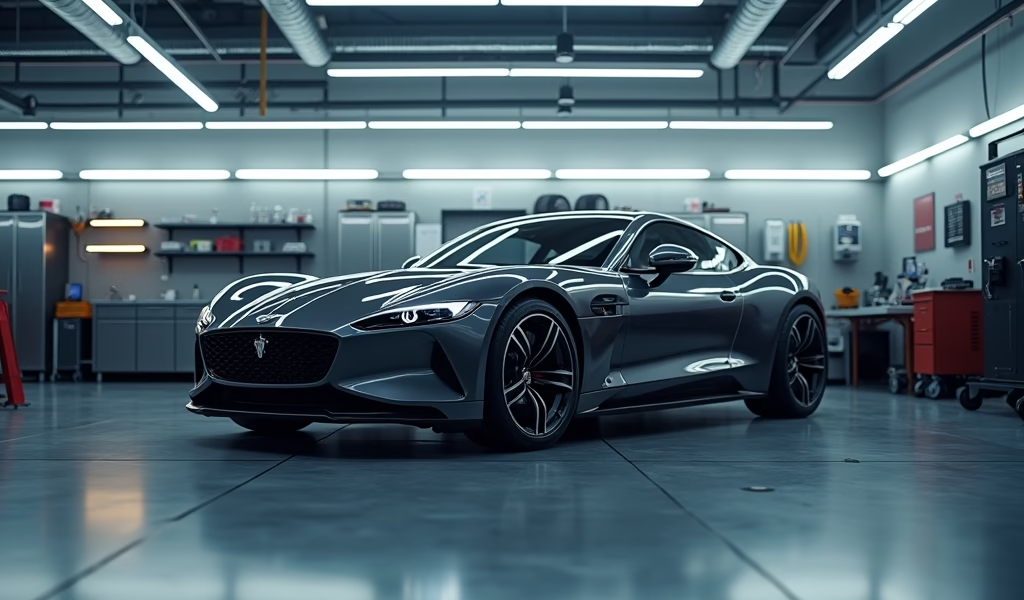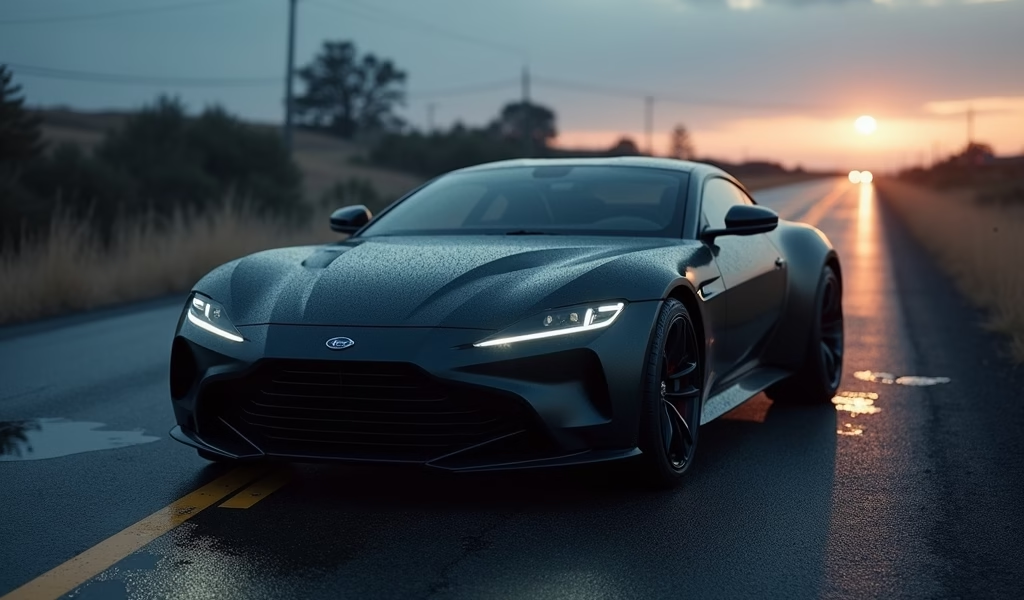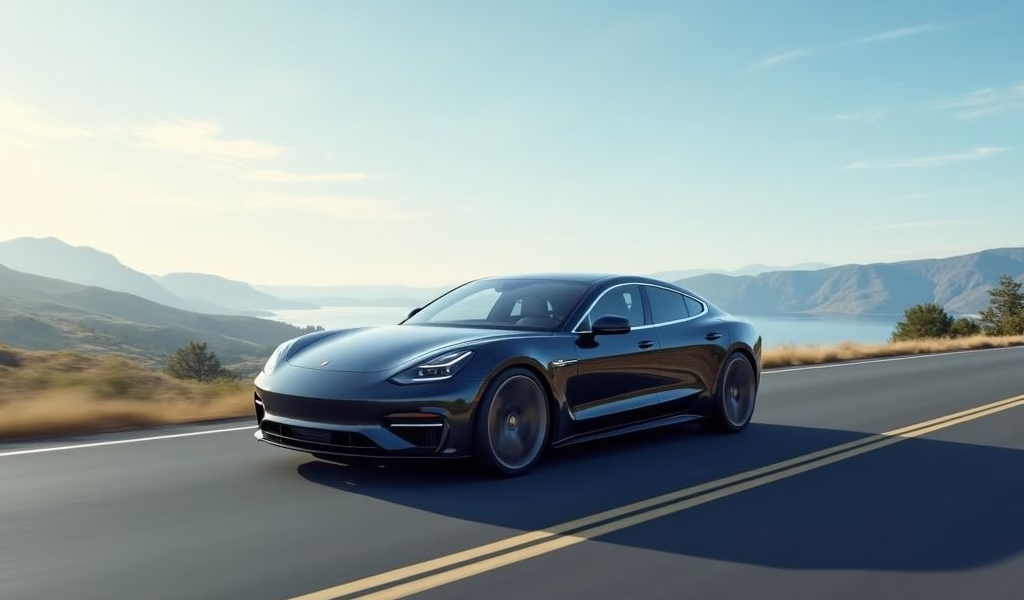Overview
This guide provides detailed maintenance strategies for 2025 vehicles, covering essential fluid checks, tire care, battery maintenance, advanced systems upkeep, and seasonal care recommendations. It balances DIY versus professional service considerations while emphasizing how proper maintenance preserves vehicle performance, safety features, and long-term value across traditional, hybrid, and electric vehicles.
Table of Contents
- Introduction to the Best Cars of 2025
- Why Proper Maintenance Matters
- Essential Fluid Checks and Changes
- Tire Care: The Foundation of Vehicle Performance
- Battery and Electrical System Maintenance
- Caring for Advanced Systems in 2025 Models
- Seasonal Maintenance Strategies
- DIY vs. Professional Maintenance
- Conclusion
- Frequently Asked Questions
Introduction to the Best Cars of 2025
The automotive landscape of 2025 represents a fascinating blend of technological innovation and refined engineering. As someone who’s spent over two decades under the hood, I’m genuinely excited about the best cars 2025 has to offer. These vehicles aren’t just transportation anymore—they’re rolling computers with more processing power than the spacecraft that took humans to the moon.
From hydrogen fuel cells to advanced hybrid systems and fully electric powertrains, the best cars 2025 has introduced are engineering marvels. But here’s the thing: even the most sophisticated vehicle requires proper care. Just like a thoroughbred racehorse needs specialized attention, these automotive thoroughbreds demand maintenance routines that honor their complexity.
In my garage, we’ve already started adapting our techniques for these next-generation vehicles. The fundamentals remain timeless, but the specifics have evolved. Through this guide, I’ll share practical advice for new car owners that balances traditional mechanical wisdom with the needs of today’s advanced systems.
Why Proper Maintenance Matters
Think of your 2025 vehicle as a symphony orchestra rather than a solo instrument. Each component plays its part in a complex harmony that produces that smooth, efficient performance you enjoy. When one section falls out of tune—whether it’s a neglected fluid change or worn brake pads—the entire performance suffers.
Regular maintenance isn’t just about preventing breakdowns (though it certainly does that). It’s about preserving the character and capabilities that made you choose one of the best cars 2025 has produced in the first place. That whisper-quiet electric motor, the precise response of adaptive suspension, the seamless shifts of your transmission—these qualities fade when maintenance lapses.
The financial argument is equally compelling. According to research by AAA, proper maintenance can extend vehicle life by up to 50% and reduce lifetime operating costs by thousands. Think of maintenance as an investment with guaranteed returns, not an expense.
Perhaps most importantly for 2025 models, proper maintenance preserves their advanced safety systems. These aren’t just convenience features—they’re technologies designed to protect you and your loved ones. Letting them deteriorate through neglect is a risk no driver should take.

Essential Fluid Checks and Changes
Fluids are the lifeblood of your vehicle, even in our increasingly electrified automotive world. The best cars 2025 has delivered still rely on specialized fluids to maintain optimal performance, though the specific requirements have evolved considerably.
Engine oil remains crucial for traditional combustion engines, but the intervals and specifications have changed dramatically. Many 2025 models use synthetic oils that can go 10,000-15,000 miles between changes, but this doesn’t mean you should ignore them. Check your oil level monthly—I tell my customers to make it a habit on the first of each month. A declining level between services can indicate developing problems long before they become catastrophic.
For hybrid vehicles among the best cars 2025 offers, the cooling system takes on heightened importance. These sophisticated systems now cool both the combustion engine and the electric components. Use only the manufacturer-specified coolant, as the wrong formulation can damage sensitive components and void warranties. The cooling system should be flushed according to your owner’s manual—typically every 60,000 miles, though this varies by manufacturer.
Transmission fluid deserves special attention, particularly in vehicles with continuously variable transmissions (CVTs) or dual-clutch systems. Unlike older automatic transmissions, many modern units are advertised as “lifetime filled,” but this is somewhat misleading. In my professional experience, changing this fluid every 60,000 miles significantly extends transmission life, even when manufacturers suggest it’s unnecessary.
For electric vehicles, the cooling system for the battery pack is absolutely critical. This isn’t something you’ll service yourself, but having it professionally inspected during regular maintenance is essential. A properly functioning cooling system can extend battery life by years and maintain performance standards.
Don’t forget these other vital fluids:
- Brake fluid: Replace every 2 years regardless of mileage (absorbs moisture over time)
- Power steering fluid: Check monthly and replace per manufacturer schedule
- Windshield washer fluid: Use a quality formula with water repellent properties
- Differential/transfer case fluid: Critical for AWD systems, typically changed every 30,000-60,000 miles
Tire Care: The Foundation of Vehicle Performance
If fluids are your vehicle’s lifeblood, tires are its feet—the only parts actually touching the road. Even the most sophisticated of the best cars 2025 has produced is completely dependent on those four contact patches, each about the size of your palm. Proper tire maintenance isn’t just about longevity; it’s about preserving handling, braking performance, and fuel efficiency.
Tire pressure monitoring systems (TPMS) are standard on all 2025 models, but don’t rely solely on dashboard warnings. These systems typically alert you only after pressure has dropped significantly—often 25% below recommended levels. Instead, check pressures monthly with a quality gauge, when tires are cold. The correct pressure isn’t what’s printed on the tire itself (that’s the maximum), but what’s specified on your vehicle’s door jamb sticker.
Rotation patterns have evolved for many 2025 vehicles. Traditional front-wheel drive cars benefit from a forward cross pattern every 5,000-7,000 miles, while rear-wheel and all-wheel drive vehicles typically use a rearward cross pattern. However, vehicles with different size tires front and rear require directional rotation only. Your new vehicle’s manual will specify the correct pattern.
The alignment specifications for the best cars 2025 has introduced are more precise than ever, particularly for vehicles with advanced driver assistance systems (ADAS). Even slight misalignment can affect these systems’ performance. I recommend checking alignment annually or whenever you notice uneven wear patterns or pulling to one side.
Tire age matters as much as tread depth. Even with visible tread remaining, tires should typically be replaced after six years due to rubber compound degradation. Check the DOT code on your sidewall—the last four digits indicate the manufacturing week and year (e.g., “1023” means the 10th week of 2023).
Battery and Electrical System Maintenance
The electrical systems in the best cars 2025 has to offer are marvels of complexity, managing everything from propulsion to climate control to entertainment. At the heart of this system is the battery—whether a traditional 12-volt unit, a hybrid battery pack, or a full EV high-voltage system.
For conventional 12-volt batteries, the maintenance landscape has changed. Most 2025 models use absorbed glass mat (AGM) or lithium-ion batteries rather than traditional flooded lead-acid units. These require no water level checks but are more sensitive to charging conditions. Have your charging system tested annually, especially as these batteries approach the 3-year mark. A failing alternator can quickly destroy an expensive AGM battery.
For hybrid vehicles, the high-voltage battery pack typically requires no regular maintenance, but its performance should be monitored. Many workshops now offer specialized diagnostic services that can assess battery health more accurately than the vehicle’s onboard systems. Consider this test every 30,000 miles or if you notice reduced electric-only range.
Full electric vehicles among the best cars 2025 has produced benefit from specific charging habits. For everyday use, charging to 80% rather than 100% can significantly extend battery life. Reserve full charges for long trips. Also, avoid letting the battery regularly drop below 20% charge when possible. Think of EV batteries like the batteries in your smartphone—they prefer partial charges to deep discharge cycles.
The proliferation of sensors and control modules in modern vehicles creates new maintenance concerns. Keep electrical connections clean and protected from moisture. When washing your engine bay (yes, even EVs benefit from a clean engine compartment), avoid directly spraying electronic components and use only products specifically designed for automotive electrical systems.
If you’re experiencing intermittent electrical issues, start by checking your vehicle’s ground connections. These often-overlooked components can cause mysterious problems when they develop corrosion. A clean ground connection can resolve issues from flickering lights to erratic sensor readings.

Caring for Advanced Systems in 2025 Models
The best cars 2025 has introduced come equipped with systems that would have seemed like science fiction just a decade ago. Adaptive driving assistants, augmented reality displays, biometric monitoring, and predictive maintenance algorithms have transformed the driving experience. Maintaining these systems requires a blend of traditional mechanical knowledge and software awareness.
Camera and radar sensors for driver assistance systems need regular attention. These components are typically located behind the windshield, in the front grille, and in bumper fascias. Keep these areas clean and free of obstructions. Even small debris can degrade performance. If your vehicle uses LIDAR sensors (those rotating “pucks” usually mounted on the roof), ensure their protective covers remain clear and undamaged.
Software updates are as important as oil changes for 2025 models. Many manufacturers now push over-the-air updates that add features and fix bugs. Don’t ignore these notifications—they often include critical security patches and performance improvements. For vehicles without OTA capability, schedule dealer visits for updates as recommended in your car buying documentation.
Calibration of advanced systems is a maintenance item few owners consider until problems arise. After windshield replacement, suspension work, or even significant body repairs, many systems require professional recalibration. This isn’t just about convenience—improperly calibrated systems can behave unpredictably in critical situations.
The infotainment systems in the best cars 2025 offers benefit from occasional resets. Just as your smartphone performs better after restarting, cycling power on these systems can resolve minor glitches. Consult your owner’s manual for the proper reset procedure—typically holding power buttons for 10+ seconds or using specific menu commands.
If your vehicle features predictive maintenance technology, learn to interpret its messages correctly. These systems analyze driving patterns and sensor data to recommend service before problems occur. They’re impressively accurate but still require human judgment. If a warning seems premature based on your maintenance records, consult a professional before proceeding with potentially unnecessary service.
Seasonal Maintenance Strategies
The changing seasons present different challenges for even the best cars 2025 has produced. A seasonal maintenance strategy helps your vehicle perform optimally year-round while preventing weather-related damage.
As spring arrives, focus on undoing winter’s damage. Road salt and chemicals can accelerate corrosion, so a thorough undercarriage cleaning is essential. Have your cooling system checked before summer heat arrives, and replace wiper blades that have been damaged by winter ice. This is also an ideal time to check for alignment issues that might have developed from winter pothole impacts.
Summer maintenance centers on heat management. Ensure all cooling systems—both for the powertrain and the cabin—are functioning properly. Battery failures often occur during extreme heat, so have yours tested if it’s more than two years old. For EVs and hybrids among the best cars 2025 has delivered, summer heat management is particularly crucial for battery longevity. When possible, park in shade or climate-controlled spaces.
Fall preparations should focus on visibility and traction. Replace any exterior lights showing signs of dimming, and have your battery tested before cold weather arrives. This is an excellent time to consider switching to winter tires if you live in an area with regular snowfall or temperatures that consistently drop below 45°F (7°C).
Winter demands special attention to several systems. Ensure your heater, defrosters, and seat warmers are functioning properly before the first cold snap. Battery capacity drops significantly in cold weather, so a battery that’s marginal in fall may fail completely in winter. For EVs, be aware that range will decrease in cold conditions—sometimes by 30% or more in extreme cold. Plan charging stops accordingly on longer trips.
For all seasons, remember that extreme temperatures affect all fluid viscosities. Check levels more frequently during temperature extremes, as systems under stress may consume fluids more rapidly.
DIY vs. Professional Maintenance
The complexity of the best cars 2025 has introduced raises legitimate questions about what maintenance you should handle yourself versus when to seek professional help. The line has shifted significantly over the past decade, but DIY maintenance remains viable and valuable for many procedures.
Tasks well-suited for DIY maintenance include fluid level checks, air filter replacement, wiper blade changes, and light bulb replacements (though some headlight designs now require partial disassembly). Tire pressure monitoring and basic battery maintenance also remain accessible to the average owner. These simple procedures require minimal tools and pose little risk of damage when performed correctly.
Procedures best left to professionals include anything involving high-voltage components in hybrids and EVs, calibration of advanced driver assistance systems, transmission service, and timing belt replacement. Modern engine compartments are densely packed, making access difficult without specialized tools. Additionally, many components now require computer reinitialization after replacement—something only possible with dealer-level diagnostic equipment.
When choosing between DIY and professional service, consider these factors:
- Safety: Any procedure involving high voltage, fuel systems, or safety equipment deserves professional attention
- Warranty implications: Some maintenance must be documented by authorized service centers to maintain warranty coverage
- Diagnostic requirements: Many issues that seem simple actually require computer diagnostics to resolve properly
- Tool investment: Specialized procedures may require expensive tools you’ll use rarely
- Environmental considerations: Proper disposal of fluids and batteries is easier for professional shops
For DIY maintenance on the best cars 2025 has produced, digital resources have become invaluable. Many manufacturers now provide detailed maintenance apps with step-by-step instructions. Platforms like ChrisFix offer high-quality video tutorials for common procedures. These resources make DIY maintenance more accessible than ever, even as vehicles grow more complex.
Remember that documentation matters regardless of who performs the maintenance. Keep detailed records of all services, including dates, mileage, parts used, and work performed. These records prove invaluable for warranty claims and significantly enhance resale value.
Conclusion
The best cars 2025 has introduced represent extraordinary achievements in engineering, comfort, and technology. Like any sophisticated tools, they reward those who invest in their care with years of reliable, enjoyable service. The maintenance practices we’ve explored aren’t just about preserving function—they’re about maintaining the experience these remarkable vehicles were designed to deliver.
The automotive landscape continues to evolve rapidly, but certain principles remain constant. Regular attention to fluids, tires, electrical systems, and seasonal needs will always form the foundation of vehicle care. What changes are the specifics and the increasing importance of software and calibration in the maintenance equation.
As we look toward the future, the relationship between owner and vehicle continues to transform. Predictive maintenance, remote diagnostics, and increasingly intelligent onboard systems are making care more proactive than reactive. Yet the value of knowledgeable human oversight—whether your own or a trusted professional’s—remains irreplaceable.
Ultimately, maintaining one of the best cars 2025 has to offer is an investment in your safety, financial well-being, and daily driving pleasure. The small efforts and expenses of proper maintenance pay dividends in reliability, longevity, and performance that far outweigh their costs. Your vehicle takes care of you on every journey—return the favor with the attention it deserves.
Frequently Asked Questions
What are the top maintenance priorities for the best cars 2025?
Regular fluid checks/changes, tire maintenance, and software updates are the top priorities. These three areas have the greatest impact on performance, safety, and longevity.
How often should I change the oil in a 2025 model vehicle?
Most 2025 models with combustion engines require oil changes every 7,500-10,000 miles using synthetic oil. Always follow manufacturer specifications as intervals vary based on driving conditions and engine technology.
Do electric vehicles require less maintenance than gas-powered cars?
Yes, EVs typically require less maintenance with no oil changes and fewer moving parts. However, they still need regular tire care, brake service, cooling system maintenance, and software updates.
How can I maximize battery life in my 2025 hybrid or EV?
Avoid frequent full charges and deep discharges, aim to keep the battery between 20-80% for daily use. Also minimize exposure to extreme temperatures when possible, especially during charging.
Are extended warranty plans worth it for 2025 model vehicles?
Extended warranties can be valuable for vehicles with advanced technology that’s expensive to repair. Compare the warranty cost against your vehicle’s reliability ratings and your tolerance for repair expenses before deciding.


Pingback: Best SUV for Snow: 10 Maintenance Tips - knowsyourcar.com